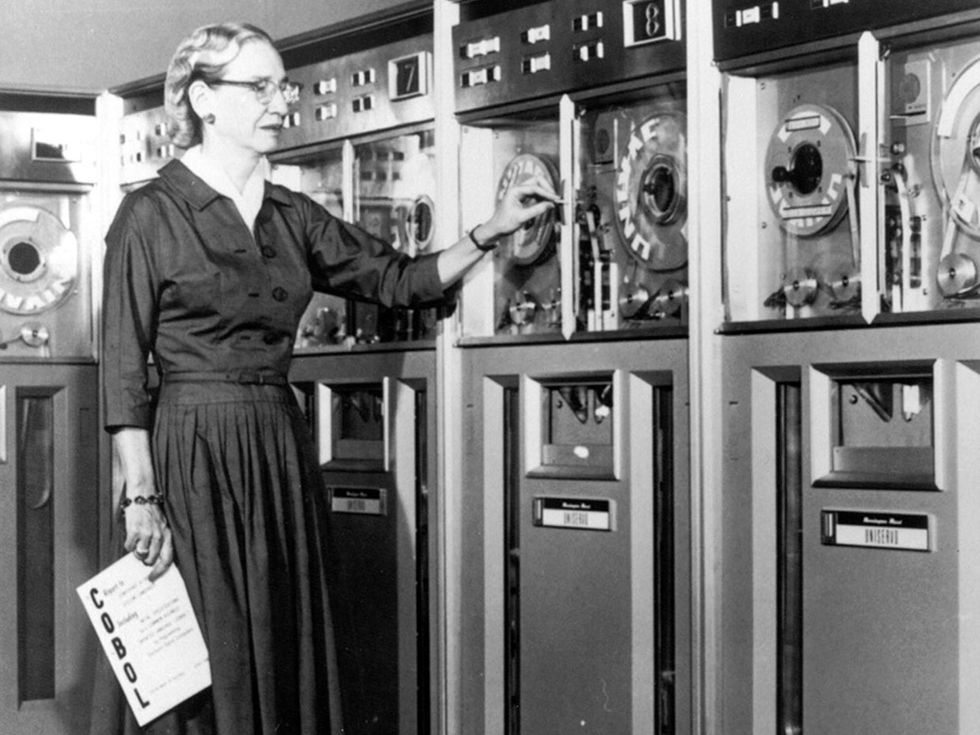Cobol programmers in the United States are heeding the call to work on antiquated state unemployment benefits computer systems that are straining under the unprecedented increase in claims filed because of COVID-19.
Applications for jobless benefits have soared in recent weeks. People who were laid off after employers curtailed operations or shut down completely because of the new coronavirus filed 6.6 million new claims for benefits in the week ending 4 April. The new claims brought the three-week total to more than 16 million, the equivalent of a tenth of the U.S. workforce.
The spike in new claims has inundated benefits computer systems in states such as Connecticut, Florida, and elsewhere, some of which haven’t updated their Cobol-based mainframe systems in years, or decades.
New Jersey Gov. Phil Murphy drove that point home during an 4 April press conference when he mistakenly referred to needing programmers with “Cobalt” skills to work on the state’s 40-year-old unemployment benefits system. “There’ll be lots of post-mortems and one of them on our list will be how the heck did we get here when we literally needed Cobol programmers,” Murphy said in the press conference.
New Jersey isn’t alone. Florida’s unemployment claims system has been so overwhelmed, the state is reverting to using paper applications. Massachusetts deployed more than 500 new employees to work remotely to meet increased demand that has overloaded its unemployment system.
Connecticut’s Department of Labor shelved work on an updated jobless benefits system in order to manage the influx of new requests caused by the economic downturn related to the virus. In the past three weeks, the department processed more new applications than it would normally handle in 18 months and currently has a six-week backlog, according to state officials.
Connecticut’s labor department is bringing back retirees and using IT staff from other departments to upgrade its 40-year-old system, which runs on a Cobol mainframe and connected components. The system is not fully automated, and requires manual actions at multiple points in the process, according to Nancy Steffens, the department’s head of communications. “I don’t have any info to provide to you other than some of the retirees returning to work are programmers knowledgeable in Cobol,” Steffens said.
An Oldie but a Goodie

Co-developed by pioneering computer programmer Grace Hopper in 1959, Cobol remains widely used in government and by financial institutions in part because it’s able to handle large processing volumes but also because of what it would cost in time and money to replace. In addition to state governments, multiple federal agencies still use it, according to a 2016 report from the U.S. Government Accountability Office. Cobol powers 95 percent of ATM swipes, 80 percent of in-person transactions and 43 percent of banking systems, according to Reuters.
Despite being so ubiquitous, there aren’t a lot of programmers who work in it. In Spectrum’s 2019 list of top programming languages, Cobol ranked 44th.
The current crisis could change that. Since January, the share of Indeed job postings per million that mention "Cobol” have increased by 6.47 percent, according to a spokesperson for the popular job board.
As states struggle, seasoned programmers are lining up to help. In recent weeks, Cobol Cowboys has been inundated with inquiries from veteran programmers interested in putting their Cobol skills to work. The Gainesville, Texas, firm operates as a job placement agency to match programmers who work as independent contractors with public and private sector projects that fit their skills.
In the past three years, the company’s database of programmers who know Cobol and other, more modern languages, has grown from 50 to close to 350. Their average age is between 45 and 60. “We have an older gentleman, a man who did some work with Grace Hopper, who I’d say is in his mid-80s,” said Eileen Hinshaw, the company’s chief operating officer.
Cobol Cowboys contacted the state of New Jersey after seeing Gov. Murphy’s press conference, and is currently “in communications with the state,” Hinshaw said.
Other Programmers Ready to Help
Long-time programmers aren’t the only ones eager to help. Hasnain Attarwala also contacted New Jersey after seeing the governor’s press conference. Attarwala, 30, is a month shy of earning a bachelor’s degree in computer science from Northern Illinois University (NIU), where he’s studied mainframe computers.
Attarwala, who is the student chair of NIU’s Association of Computing Machinery chapter, has a job lined up after graduation, but wants to donate his time now. In the past week, he collected names of other NIU students who want help and talked to a volunteer coordinator for U.S. Digital Response, which is helping New Jersey line up volunteers with digital and other skills. As of 9 April, Attarwala was waiting to hear if his services were needed.
U.S. Digital Response was formed last month by a group of public-interest technologists, including some who worked in technology roles in the Obama administration. The group is acting as a clearinghouse for federal and state agencies that need assistance and volunteers with digital skills who want to provide it. In addition to screening volunteers, the group designed New Jersey’s tech talent volunteer application form, among other projects.
More than 3,500 people have added their names to U.S. Digital Response’s volunteer pool, although the number of people who’ve been placed so far is well below that, according to Cori Zarek, one of the group’s co-founders and a deputy U.S. Chief Technology Officer from 2016 to 2017.
The group doesn’t collect demographic data so it’s impossible to know people’s ages or employment status, Zarek said. Still, “We’ve seen lots of seasoned veterans of these mainframe systems raising their hands. It’s incredible. It’s not just in New Jersey. We are absolutely eager to understand who can bring those skills to be ready to solve some of these problems,” said Zarek, who also runs the Digital Service Collaborative at Georgetown University’s Beeck Center for Social Impact.
States that upgraded unemployment claims systems in recent years may be better able to weather the onslaught of claims. Several formed consortiums to create a core unemployment insurance system that can be tailored to meet each one’s requirements. One consortium is ReEmployUSA, which started in Mississippi, and was subsequently adopted by Maine and Rhode Island, though not without problems. Connecticut was in the process of switching to ReEmployUSA before COVID-19 unraveled those plans.


